Zhangjiajie’s Mountains: Step into the Avatar Mountains of the Real World
Famous for their uniqueness, Zhangjiajie's mountains are mostly composed of quartz sandstone, with pillar-like mountain bodies that are as dense as a forest. Each peak is unique and varies in shape. Some peaks are sharp as swords, piercing through the clouds, while others are massive and towering, exuding stability and solemnity. If you are planning a tour to Zhangjiajie, get ready to be amazed by these peculiar mountains.
Formation of Zhangjiajie Mountains
Zhangjiajie’s large-scale landscape of peculiar peaks is rare in the world. How were these towering Zhangjiajie mountains erected?
During the Middle to the Late Devonian period, about 380 million years ago, this area was coastal. Over time, detrital material formed over 500m of quartz sandstone. In the Late Devonian, crustal uplift exposed the sandstone to weathering and erosion. Later, during the Permian and Triassic, crustal subsidence turned Zhangjiajie into an ocean, depositing limestone over the sandstone. By the Late Triassic, crustal uplift turned Zhangjiajie back into land, re-exposing the sedimentary rock layers, which fractured and deformed during the uplift.
About 65 to 30 million years ago (Paleogene), the crust in Zhangjiajie was stable. Uplifted mountains of Zhangjiajie eroded to create a 1,200m-high plain. From 23 to 2.6 million years ago, the Himalayan Movement uplifted the area. Water erosion along fractures and gravity collapse shaped the quartz sandstone into unique landforms like table mountains, stone walls, peak clusters, and isolated peaks. It was not until then that the landform of Zhangjiajie gradually took shape.
Avatar Mountains in China
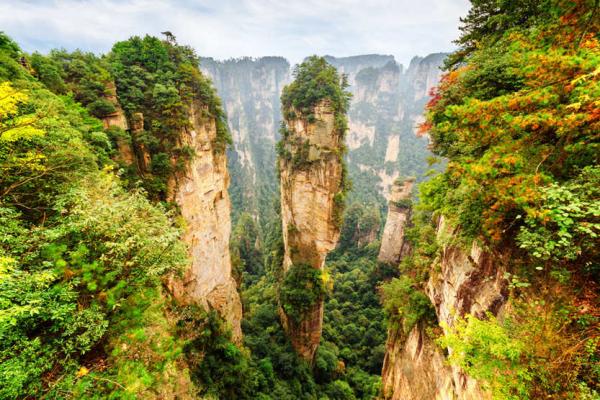
The magnificent mountain ranges depicted in the sci-fi blockbuster "Avatar" as the planet of Pandora were primarily inspired by the scenic mountains of Zhangjiajie, China. It is worth mentioning that the attraction of "Qiankun Zhu" (Heaven and Earth Pillar) in Yuanjiajie is the real-life prototype for the mysterious "Hallelujah Mountains," or the floating mountains in the film. Furthermore, in 2010, "Qiankun Zhu" was officially renamed "Hallelujah Mountain".
The Avatar floating mountains in Zhangjiajie are upright and towering, with various shapes and stunning scenery, resembling amazing sculptures created by nature. You can take the Bailong Elevator and shuttle between the peculiar peaks and rocks, experiencing the thrill and excitement. The stone pillar forests are piercing into the sky, and the Avatar Hallelujah Mountain in Zhangjiajie shrouded in mist makes you feel as if you are in a fantasy movie!
Zhangjiajie Tianmen Mountain
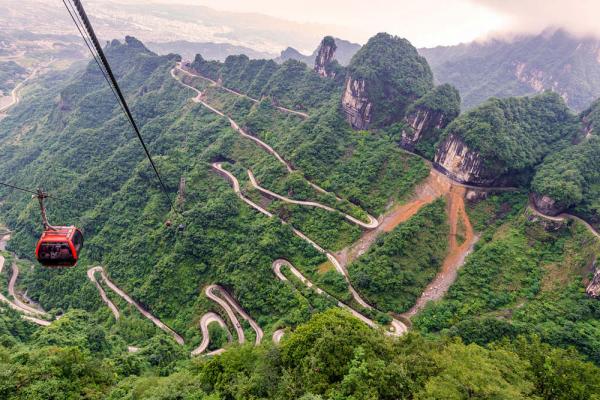
Tianmen Mountain in Zhangjiajie of Hunan, China is prestige globally for its magnificent peaks, deep canyons, waterfalls, and hot springs. It got its name because there is a naturally formed stone cave at the top of the mountain, shaped like a heavenly gate. The four major wonders of the scenic area are the Tianmen Mountain Cable Car, the Tianmen Cave (Heaven’s Door), 99-bend Road (Heaven-linking Road), and the primary and secondary forest on the mountainside.
As one of the most famous mountains in Zhangjiajie, Tianmen Mountain rises abruptly from the ground, featuring not only steep terrain but also abundant natural landscapes. You can take the Tianmen Mountain Cable Car to ascend the mountain slowly. It is the world's longest alpine passenger cableway, with picturesque scenery along the way, including continuous peaks and swirling clouds. Additionally, if you prefer a thrilling adventure at Tianmen Mountain, don't miss the glass skywalk.
Tianzi Mountain
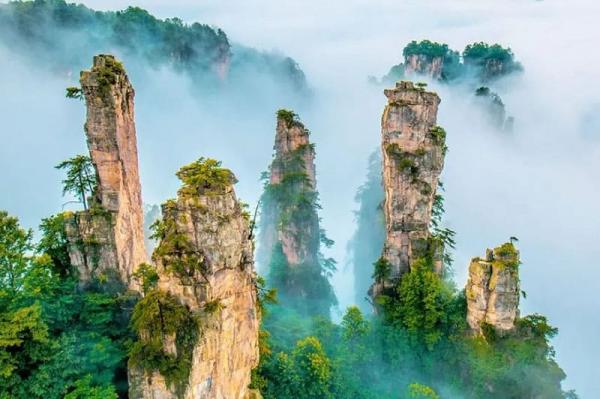
Traveling to Zhangjiajie, Tianzi Mountain is a must-visit attraction. Known as the "King of Peak Forests", Tianzi Mountain is one of the four major scenic spots in the Wulingyuan District. It borders Suoxi Valley to the east, Huangshi Village to the south, and Sangzhi County to the north. Stone peaks rise abruptly on three sides—the east, west, and south, with gullies stretching far and wide. /city-c62-zhangjiajie
Tianzi Mountain is not only precipitous but also gives people a sense of mystery and tranquility, especially renowned for its stone forest wonders. It provides one of the best hiking trails for visitors to discover the mountains in Zhangjiajie. Standing on the main peak of Tianzishan Mountain, looking out into the distance, you’ll have a broad view with long lines of sight and rich layers. The landscape within hundreds of square kilometers can be seen at a glance.
Yangjiajie’s Mountains
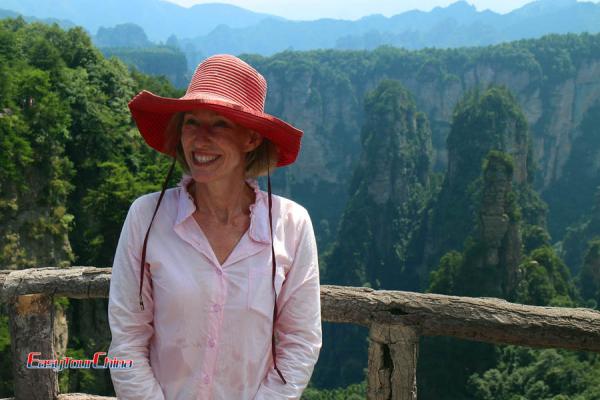
The Zhangjiajie mountains in Yangjiajie belong to the quartz sandstone peak-forest landform, characterized by rows and walls of peaks, and are therefore praised by geologists as a significant discovery of Zhangjiajie's landform. As one of the recently developed mountains of Zhangjiajie, the spectacular peak walls of Yangjiajie consist of dozens of parallel walls standing upright, with an irregular yet orderly arrangement.
Yangjiajie is a paradise for hikers. Embarking on a hiking tour to Yangjiajie, you will see continuous rolling mountains that unfold like a huge ink-wash painting between heaven and earth. The peaks here have various shapes. Some are as steep as if cut by a knife or axe, while others resemble huge beasts coiled among the clouds. The highest peak in Yuanjiajie is One Step to Heaven, from where you can enjoy a panoramic view of Zhangjiajie’s mountains.
Huangshi Village
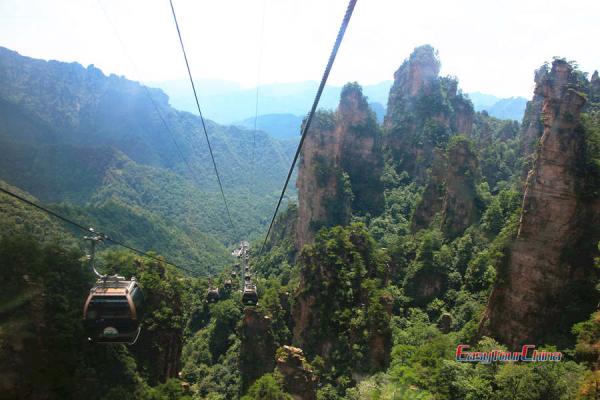
Huangshi Village is one of the majestic Zhangjiajie mountains. It is a place where the scenic sites of Zhangjiajie are most concentrated. Surrounded by cliffs and precipices, Huangshi Village is dotted with trees, while the top of the fort is often gently shrouded in mist. You can reach the summit on foot by climbing over a thousand steps. This may be physically demanding. But once atop, you can take in a panoramic view of thousands of stone peaks.
There are also many well-preserved ancient buildings and folk culture sites from the Ming and Qing dynasties, allowing you to gain an in-depth understanding of the history and culture of western Hunan during your Zhangjiajie travel. As the sun sets, the mountains of Zhangjiajie take on a mythical beauty in the afterglow, resembling a place where immortals dwell.